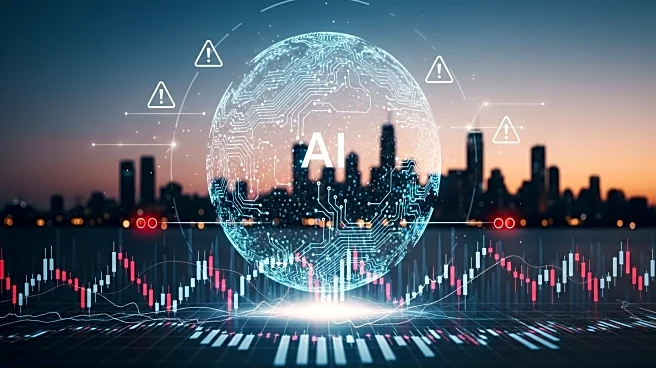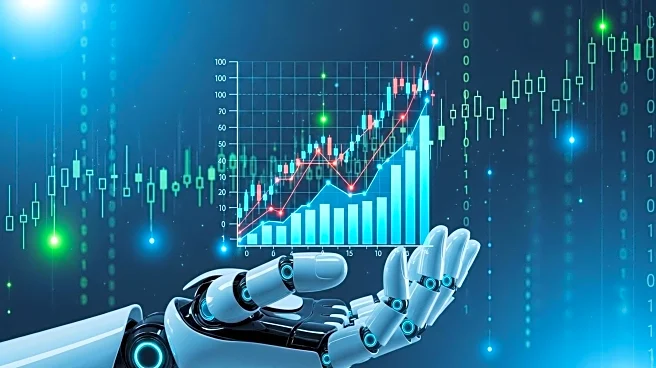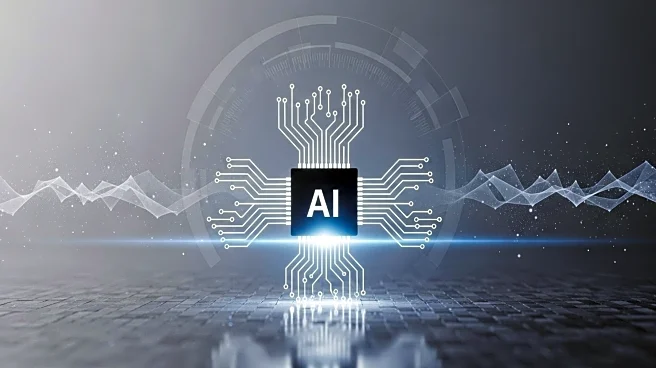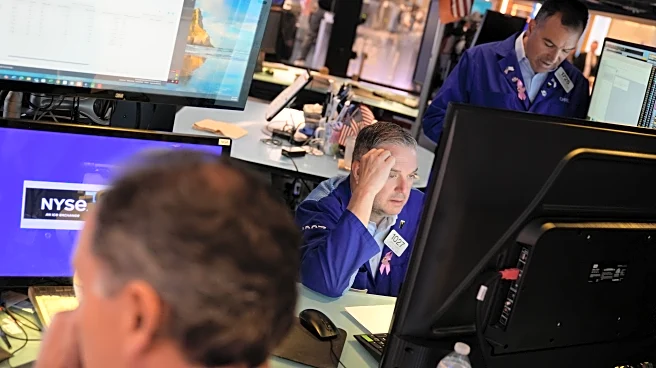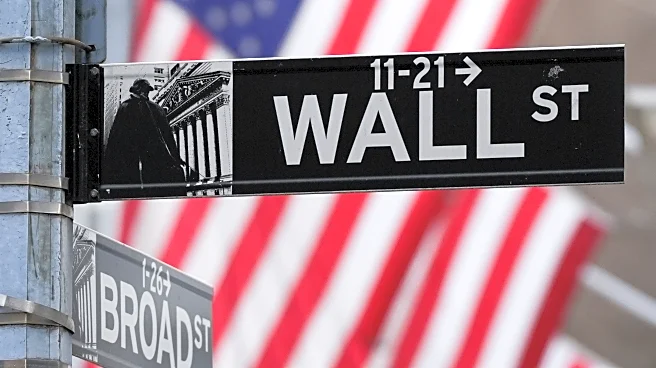What's Happening?
Jim Cramer, a prominent financial analyst, has identified three distinct sectors within the current U.S. economy, highlighting their varied performance amid the ongoing government shutdown. According to Cramer, the first sector, driven by artificial intelligence and data centers, is booming. This sector has seen significant growth in S&P 500 returns, earnings, and capital spending, largely attributed to AI-related stocks such as Meta, Alphabet, Amazon, and Microsoft. Cramer dismisses fears of a tech bubble akin to the dotcom era, citing the profitability and financial stability of these tech giants. The second sector, referred to as the 'real economy,' includes retail, housing, freight, autos, and travel, which are struggling due to flat job growth and lack of recent economic data. Cramer suggests that this sector requires multiple rate cuts from the Federal Reserve to recover. The third sector consists of speculative stocks, particularly in nuclear power, cryptocurrency, and quantum computing, which Cramer warns are overvalued and reminiscent of the dotcom bubble.
Why It's Important?
Cramer's analysis is significant as it provides insight into the current economic landscape, particularly during a period of uncertainty caused by the government shutdown. The booming AI sector indicates a shift in investment focus towards technology, which could drive future economic growth and innovation. However, the struggles of the 'real economy' highlight vulnerabilities in traditional business sectors, potentially affecting employment and consumer spending. The speculative sector's overvaluation poses risks of market instability, which could lead to financial losses for investors. Understanding these dynamics is crucial for policymakers, investors, and businesses as they navigate economic challenges and opportunities.
What's Next?
The future of these economic sectors will likely depend on several factors, including government policy decisions, Federal Reserve actions, and market responses. The AI sector may continue to thrive if technological advancements persist and investor confidence remains strong. The 'real economy' could benefit from potential interest rate cuts, which may stimulate growth and alleviate economic pressures. Meanwhile, the speculative sector may face corrections if investor sentiment shifts or regulatory measures are introduced to curb excessive valuations. Stakeholders will need to monitor these developments closely to adapt their strategies accordingly.
Beyond the Headlines
Beyond the immediate economic implications, Cramer's analysis raises questions about the long-term impact of technological advancements on employment and industry dynamics. The rise of AI could lead to significant changes in job markets, requiring workforce adaptation and retraining. Additionally, the speculative sector's volatility underscores the need for robust financial regulations to protect investors and maintain market stability. These broader considerations highlight the complex interplay between innovation, economic policy, and societal change.



